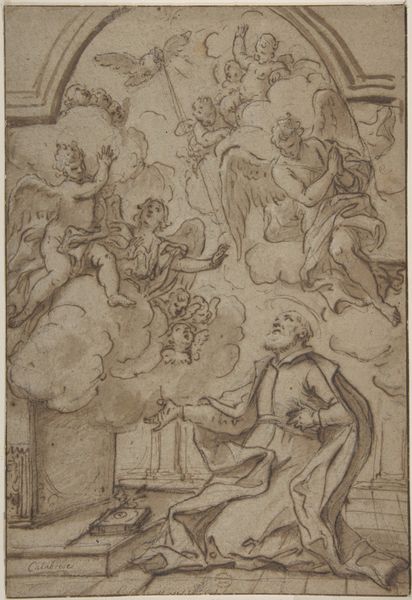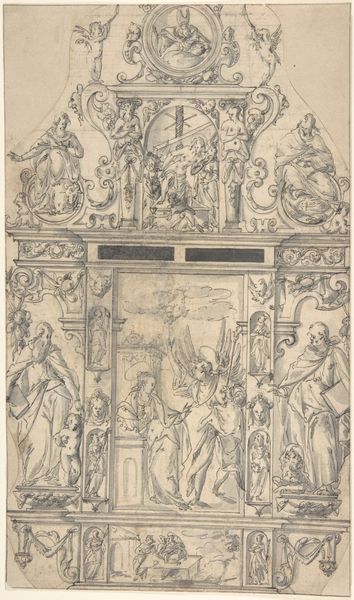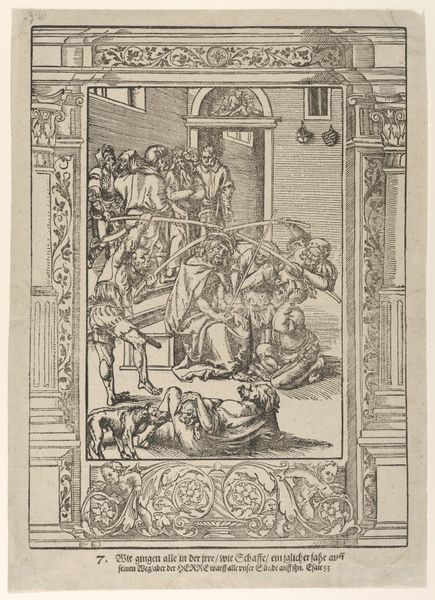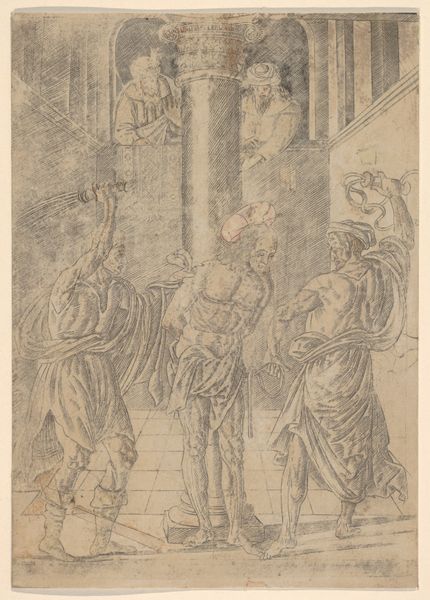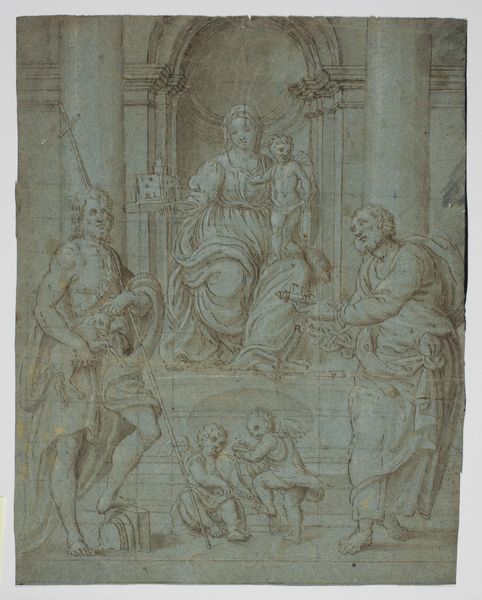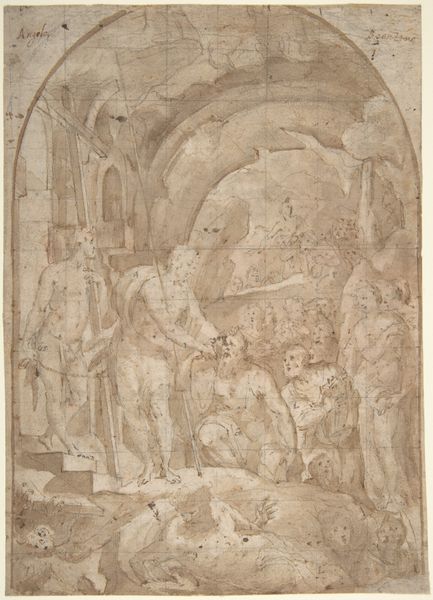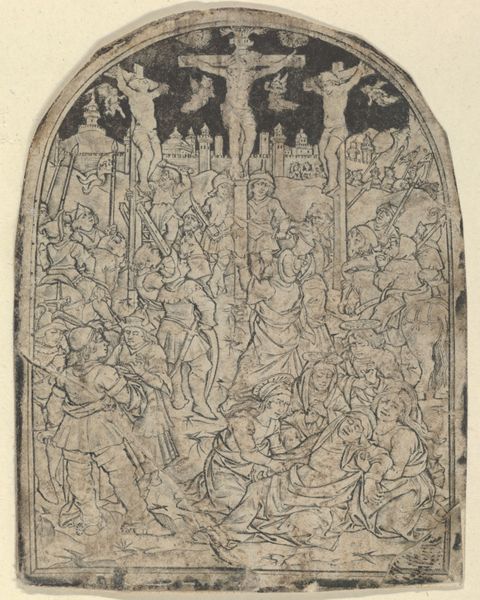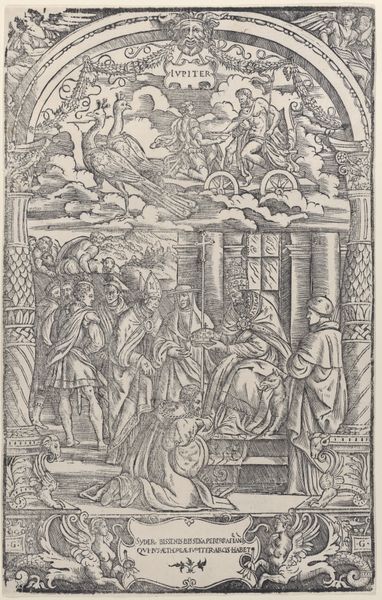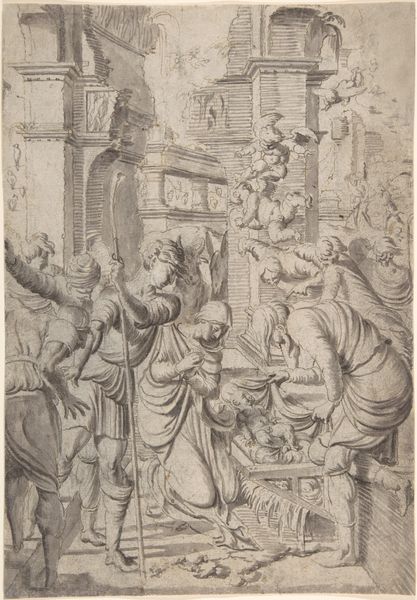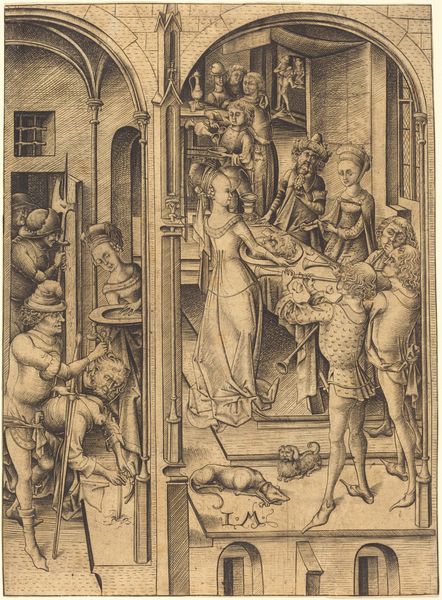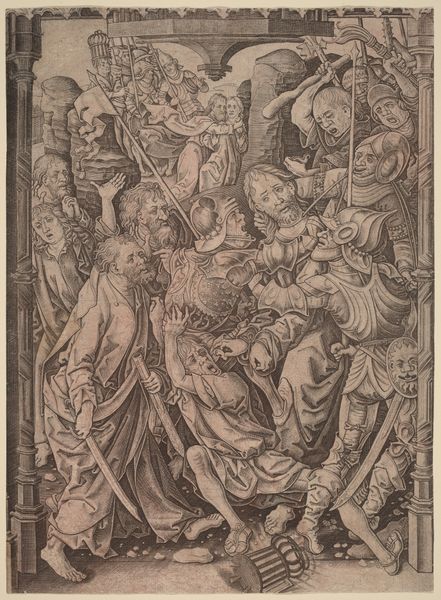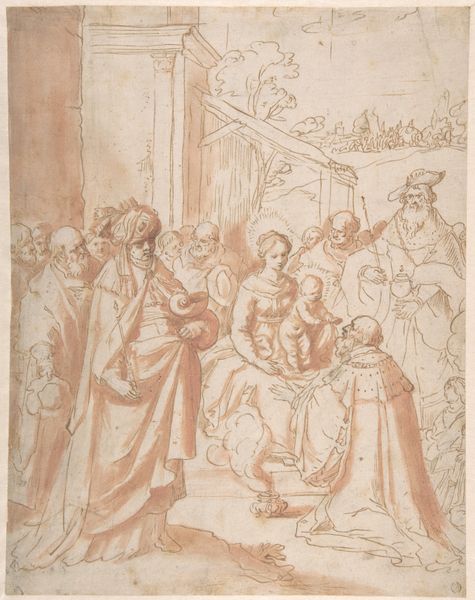
drawing, print, ink, pen, engraving
#
drawing
#
narrative-art
#
ink painting
# print
#
pencil sketch
#
figuration
#
ink
#
pen-ink sketch
#
pen
#
genre-painting
#
history-painting
#
northern-renaissance
#
engraving
Dimensions: 340 mm (height) x 262 mm (width) (bladmaal)
Curator: Ah, here we have a particularly intriguing print – “The Last Supper,” or “Nadveren,” by Master I.A.M. of Zwolle, created sometime between 1465 and 1500. Editor: It’s a marvel of detail, especially given the limitations of engraving. Yet, there's a quiet unease here. A kind of sketched reality of that moment. Curator: It is, isn’t it? This piece truly reflects the Northern Renaissance style—that detailed realism combined with an almost… haunted sensibility. And you are spot on by drawing attention to the engraving. If we lean in, we can trace the meticulous lines etched by the artist. Think about the labor involved, cutting into the metal, line by line, to produce these images. These prints democratized religious imagery for the common folk. Editor: Yes, the act of making becomes critical here. Looking closely, one can begin to wonder: how the very act of reproducing images reshaped how stories—even sacred stories—were consumed. The artist also gave us some secular details: a drowsy dog chewing on a bone under the table. It feels strangely like the calm before the storm, yet so alive. Curator: Exactly! A genius blend of the sacred and the everyday. Look at the varied reactions on the faces of the disciples; that mix of confusion, disbelief, quiet contemplation, and anxiety… all so palpably human. There is that quietness to it, an observation point for us, now. Do we know what they were about to realize? Editor: This isn't some glorified heroic scene, either. This is a material scene—down to the water pitcher in the right corner. The rough basket of bread looks plain—but very, very nourishing. This artwork grounds the divine moment in daily life. Curator: What stays with me, always, is that subtle understanding of the universal shared moments of meals and company that transcends time and context. Despite all the implied drama of the moment, the simple breaking of bread makes the engraving very intimate. Editor: For me, the genius lies in the mundane becoming extraordinary through meticulous labor. A humble engraving elevates daily acts into historical record. It is something of a quiet manifesto, this scene.
Comments
No comments
Be the first to comment and join the conversation on the ultimate creative platform.
